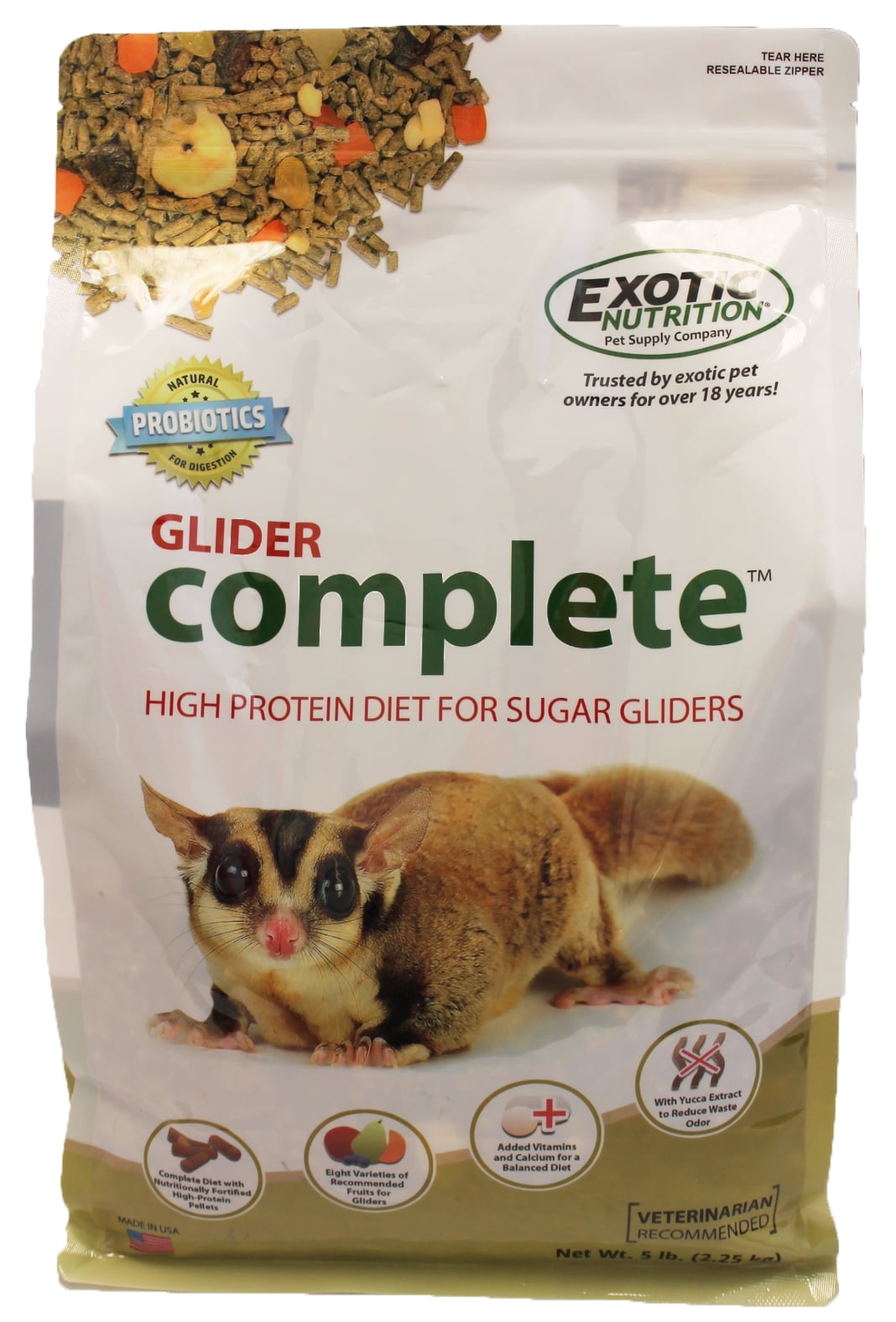

They are lively and curious creatures that need a lot of social interaction to stay happy. Sugar gliders are nocturnal animals that must be provided with a calm place in which to sleep during the day and opportunity to play and exercise during the night. There are seven subspecies of Petaurus breviceps:

When the sugar glider is not gliding, they look like somewhat flabby pieces of skin. The membranes are usually pink in colour and surrounded by a thin layer of fur. Unfortunately for the sugar glider, they are of little use when assaulted by kookaburras and other birds of prey. The membranes are also used to gather food.Īlthough the membranes are believed to have developed as a food finding aid, they may also be valuable when the sugar glider is attacked by predators such as goannas, quolls, antechinuses, and mulgaras. patagium) – form a sleek surface that makes it possible for the sugar glider to glide through the air from tree to tree in search of food.
#Sugar glider food skin
When fully extended, these skin membranes – formally known as patagia (sing. The most striking part of the sugar glider anatomy is naturally the twin skin membranes extending from the fifth finger of the forelimb back to the first toe of the hind foot. Specimens native to the northern part of the species range, where the climate is warmer, are usually smaller than their southern counterparts and are more brown than grey. Sugar gliders weigh around 90-150 grams (3 to 5.3 oz), with the males typically being a bit heavier than the females. The body of a sugar glider is covered in pearly grey or brownish fur with cream colored patches on the underbelly and a black stripe running along the back. The muzzle is short and rounded and the ears are grey or black. The tail only exhibit moderate tapering and the last quarter is black. When an adult female dies, one of the young females in the group will take her place, but when an adult male dies he will be replaced by an outsider.Ī sugar glider is roughly 16-21 cm (6.3-7.5 in) long from nose tip to tail base and has a tail almost as long as the body and nearly as thick as a human thumb. The males use saliva and scent produced by glands on the forehead and chest to mark the territory and this scent will also be transferred to all the members of the group so they can recognize each other by smell. It is sometimes difficult to realize that you are in sugar glider territory since these animals are small, nocturnal and easily spooked, but stripped bark and the sight of tooth marks left in the soft, green shoots of acacia trees are two reliable signs. They are social creatures that spend a lot of time interacting with each other they share the same nest and will defend their territory with violence if necessary. In the wild, sugar gliders seek out environments with tree hollows where they form groups consisting of up to seven adults and the current season's young. Learning about the habits of wild sugar gliders will make it easier for you to provide your pet with the right care and understand its needs and behaviors. They give birth after a very short gestation period and the youngsters stay hidden inside a pouch where they feed on milk. kangaroos and koalas, sugar gliders are marsupials. It is for instance illegal to keep them without a permit in their native Australia. Before getting a sugar glider, check with local authorities to see if you need a permit. If given plenty of attention and affection, sugar gliders can bond strongly to their human keepers and become friendly pets. They also eat pollen, insects and small vertebrates. Wild sugar gliders feed on nectar and on the sweet sap of certain species of eucalyptus, acacia and gum tree, hence the name Sugar glider. It is sometimes mistaken for a flying squirrel since both animals can glide through the air by spreading out their limbs in a parachute fashion, but they are not even closely related species.

The Sugar glider ( Petaurus breviceps) is a small marsupial native to Australia and New Guinea, including the Bismarck Archipelago.


 0 kommentar(er)
0 kommentar(er)
